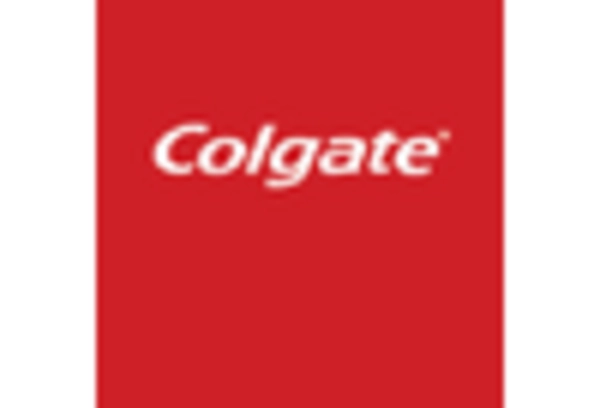Influence of Social Media
The influence of social media on consumer behavior is increasingly shaping the halitosis treatment market. Platforms such as Instagram and TikTok have become vital channels for promoting oral health awareness and products. Influencers and dental professionals share tips and product recommendations, which can lead to a surge in interest for specific treatments. This trend is particularly evident among younger demographics, who are more likely to engage with content related to personal care. As a result, the halitosis treatment market is experiencing a shift, with an estimated 20% growth in online sales of oral care products attributed to social media marketing strategies. This dynamic environment suggests that brands must adapt to leverage these platforms effectively.
Expansion of Dental Services
The expansion of dental services across the UK is contributing to the growth of the halitosis treatment market. With more dental clinics offering specialized treatments for bad breath, patients have greater access to professional care. This trend is supported by government initiatives aimed at improving oral health services, which have led to an increase in the number of dental practitioners. As a result, the market is witnessing a rise in the availability of advanced treatment options, including professional cleanings and diagnostic services. This expansion is expected to enhance consumer confidence in seeking treatment for halitosis, potentially increasing market revenues by an estimated 10% over the next few years.
Growing Health Consciousness
The increasing health consciousness among the UK population is a pivotal driver for the halitosis treatment market. As individuals become more aware of the implications of oral health on overall well-being, the demand for effective halitosis treatments rises. This trend is reflected in the growing sales of oral hygiene products, which have seen an increase of approximately 15% over the past year. Consumers are actively seeking solutions that not only address bad breath but also promote long-term oral health. This shift in consumer behavior is likely to propel the halitosis treatment market forward, as more people prioritize their oral hygiene routines and seek professional treatments, thereby expanding the market's potential.
Rising Incidence of Oral Diseases
The rising incidence of oral diseases in the UK is a significant driver for the halitosis treatment market. Conditions such as gum disease and tooth decay are becoming more prevalent, leading to an increased focus on oral hygiene. According to recent health statistics, nearly 50% of adults in the UK experience some form of gum disease, which is closely linked to halitosis. This alarming trend is prompting consumers to seek effective treatments to combat bad breath and improve their oral health. Consequently, the halitosis treatment market is likely to expand as healthcare providers emphasize the importance of addressing underlying oral health issues, thereby driving demand for specialized products and services.
Innovations in Product Formulation
Innovations in product formulation are driving advancements in the halitosis treatment market. Manufacturers are increasingly developing new products that incorporate natural ingredients and advanced technologies to combat bad breath effectively. For instance, the introduction of mouthwashes and chewing gums with active ingredients that neutralize odor-causing bacteria is gaining traction. This trend aligns with consumer preferences for products that are both effective and safe. The market is projected to grow by approximately 12% as these innovative solutions become more widely available. As consumers seek out products that offer immediate and long-lasting results, the halitosis treatment market is likely to benefit from these developments, fostering a competitive landscape.

















Leave a Comment